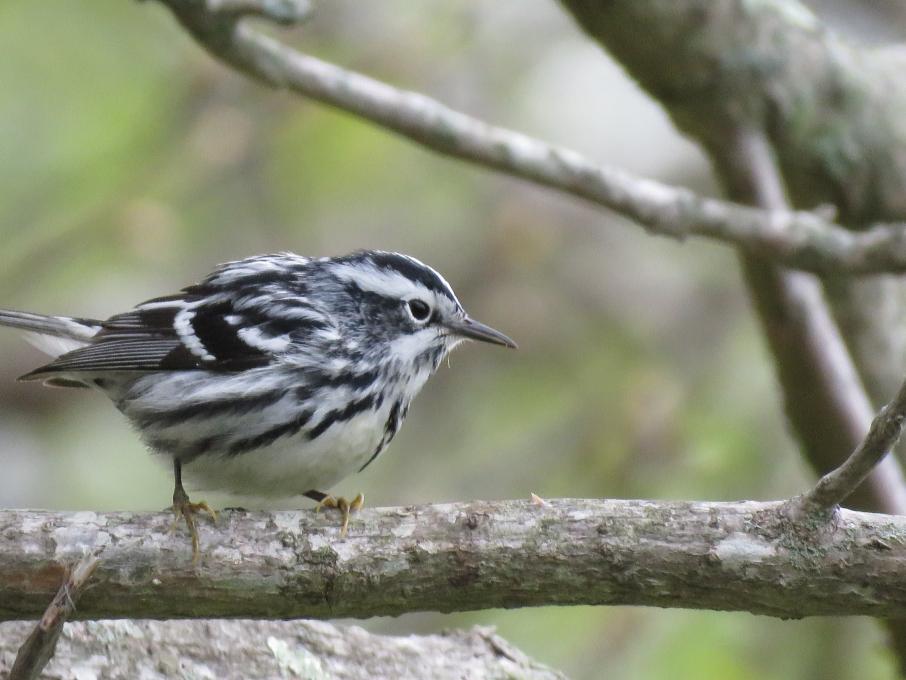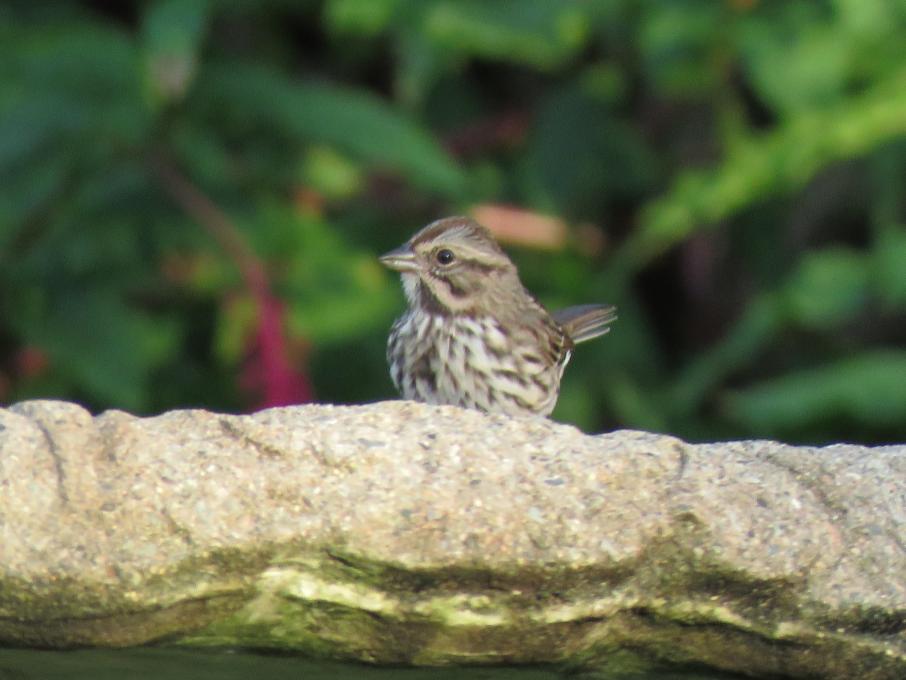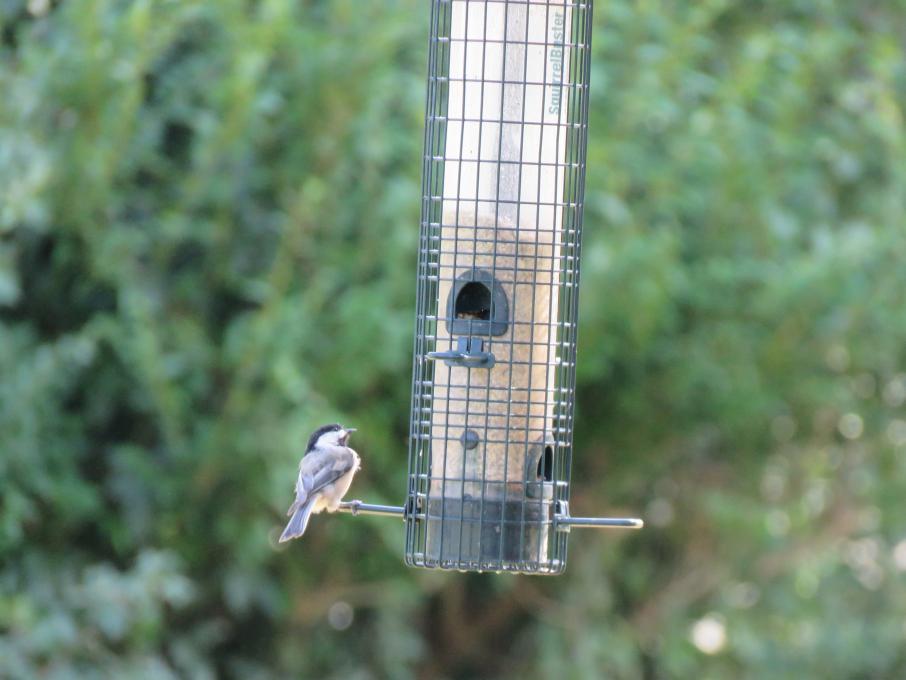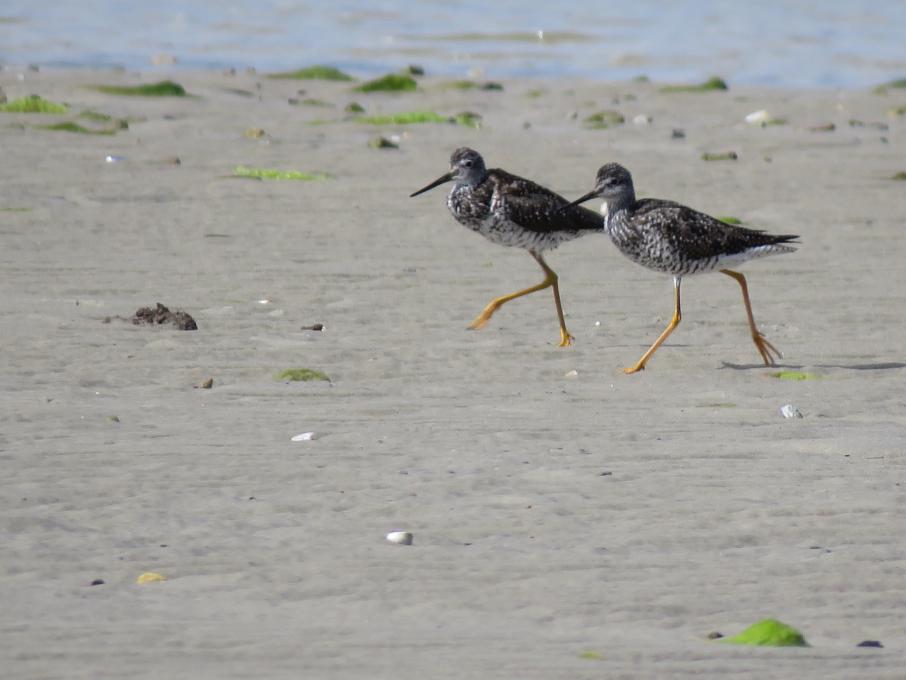Sue
Forum Replies Created
Viewing 4 posts - 1 through 4 (of 4 total)
-
SueParticipant
 I learned a lot about the importance of light, composition and background to accentuate my bird photos. I am using my photo of the black and white warbler to exemplify the law of thirds (though I now know it could also be used as an example of using a shallow depth of field), I see how it enhances the photo to include a sense of the setting/context in which the bird is in. I used the photo of the grackle on the dead branch to exemplify how a large depth of field can detract from the sheen and rich colors of the bird as the brilliant blue sky seems to compete and detract from the bird rather than enhance it. For an example of a shallow depth of field I think my song sparrow photo demonstrates how paying attention to your depth of field can really help illuminate your subject.
I learned a lot about the importance of light, composition and background to accentuate my bird photos. I am using my photo of the black and white warbler to exemplify the law of thirds (though I now know it could also be used as an example of using a shallow depth of field), I see how it enhances the photo to include a sense of the setting/context in which the bird is in. I used the photo of the grackle on the dead branch to exemplify how a large depth of field can detract from the sheen and rich colors of the bird as the brilliant blue sky seems to compete and detract from the bird rather than enhance it. For an example of a shallow depth of field I think my song sparrow photo demonstrates how paying attention to your depth of field can really help illuminate your subject. 
 in reply to: Practice Crafting Great Bird Photos #913836
in reply to: Practice Crafting Great Bird Photos #913836 -
SueParticipantI chose to simply observe birds at a sit spot in my yard. I experienced some initial difficulties for myself sitting still but just like the birds became accustom to my presence after about 15 minutes I too soon adjusted to just sitting and observing them. I found it relaxing and uniquely informative to just observe with my binoculars without the goal of getting a good shot. I feel like I was able to learn about bird behavior in an interactive, flowing and narrative manner rather than in bits and pieces. I definitely want to use "sit spots " as part of my regular practice and do see the value they hold in becoming a good photographer. I observed that sometimes birds take their birdseed from the feeder to the tree limbs up above to eat it right away and other times they take it back to locations farther from the birdfeeder, it seems to correlate with the size/value of the food they got from the feeder (seeds get eaten right away vs. peanuts get flown off elsewhere). I also observed how a downy woodpecker struggled to gain his turn at the feeder while a female Downy seemed to soon lost interest in waiting for him to have success grabbing her a snack. Nearby, hummingbirds were jousting for territory at their feeder and it was hard to tell if anyone reigned superior there as all three Ruby-throated Hummingbirds looked the same to me.in reply to: Practice Gaining an Audience with Birds #913224
-
SueParticipantI researched about the Black-capped Chickadee. I learned that I should not expect any group photos at the feeder as they take turns eating and that I should look for them in my front yard on my birch tree too, not just in the back by my feeders. My research affirmed that they are bold and curious and my encounters with them as I fill my feeders supports this and make them a cooperative photographic subject. I learned that they have many calls and that the one I always thought was conveying contentment is really an alarm call! Didn't know they played such a sentinel role in sounding the sophisticated alarm of danger at my feeders.
 in reply to: Practice Understanding Birds for Better Photos #912904
in reply to: Practice Understanding Birds for Better Photos #912904 -
SueParticipantMy goals for taking this course are to become better acclimated to my camera's features and expand my very basic photography knowledge. So far I find myself taking photos in order to share birds with friends/family (whether they are interested or not), keep track of birds seen, dabble in creating photo cards and to sharpen my identification skills. I'm interested in using my photos to design my own greeting cards for personal use and possibly charitable purposes in the future, depending on how I progress. I may need to upgrade from my bridge camera to get the quality of card photos I'd like but don't feel as though I have maximized its potential output yet. I enjoy capturing unusual bird action and expressions of emotions.
 in reply to: Practice Matching Your Gear to Your Goals #912854
in reply to: Practice Matching Your Gear to Your Goals #912854
Viewing 4 posts - 1 through 4 (of 4 total)
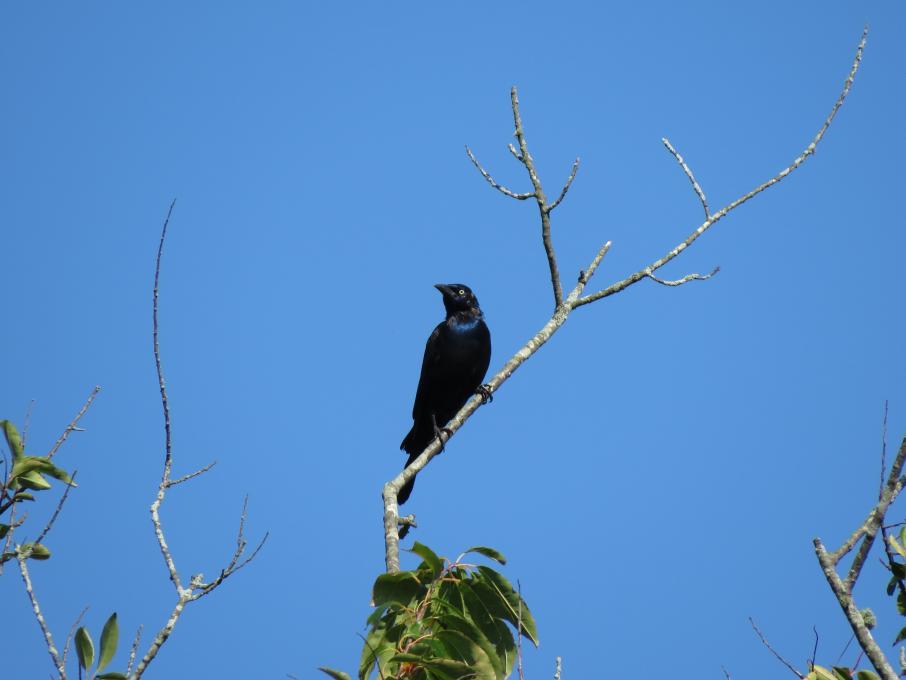 I learned a lot about the importance of light, composition and background to accentuate my bird photos. I am using my photo of the black and white warbler to exemplify the law of thirds (though I now know it could also be used as an example of using a shallow depth of field), I see how it enhances the photo to include a sense of the setting/context in which the bird is in. I used the photo of the grackle on the dead branch to exemplify how a large depth of field can detract from the sheen and rich colors of the bird as the brilliant blue sky seems to compete and detract from the bird rather than enhance it. For an example of a shallow depth of field I think my song sparrow photo demonstrates how paying attention to your depth of field can really help illuminate your subject.
I learned a lot about the importance of light, composition and background to accentuate my bird photos. I am using my photo of the black and white warbler to exemplify the law of thirds (though I now know it could also be used as an example of using a shallow depth of field), I see how it enhances the photo to include a sense of the setting/context in which the bird is in. I used the photo of the grackle on the dead branch to exemplify how a large depth of field can detract from the sheen and rich colors of the bird as the brilliant blue sky seems to compete and detract from the bird rather than enhance it. For an example of a shallow depth of field I think my song sparrow photo demonstrates how paying attention to your depth of field can really help illuminate your subject. 